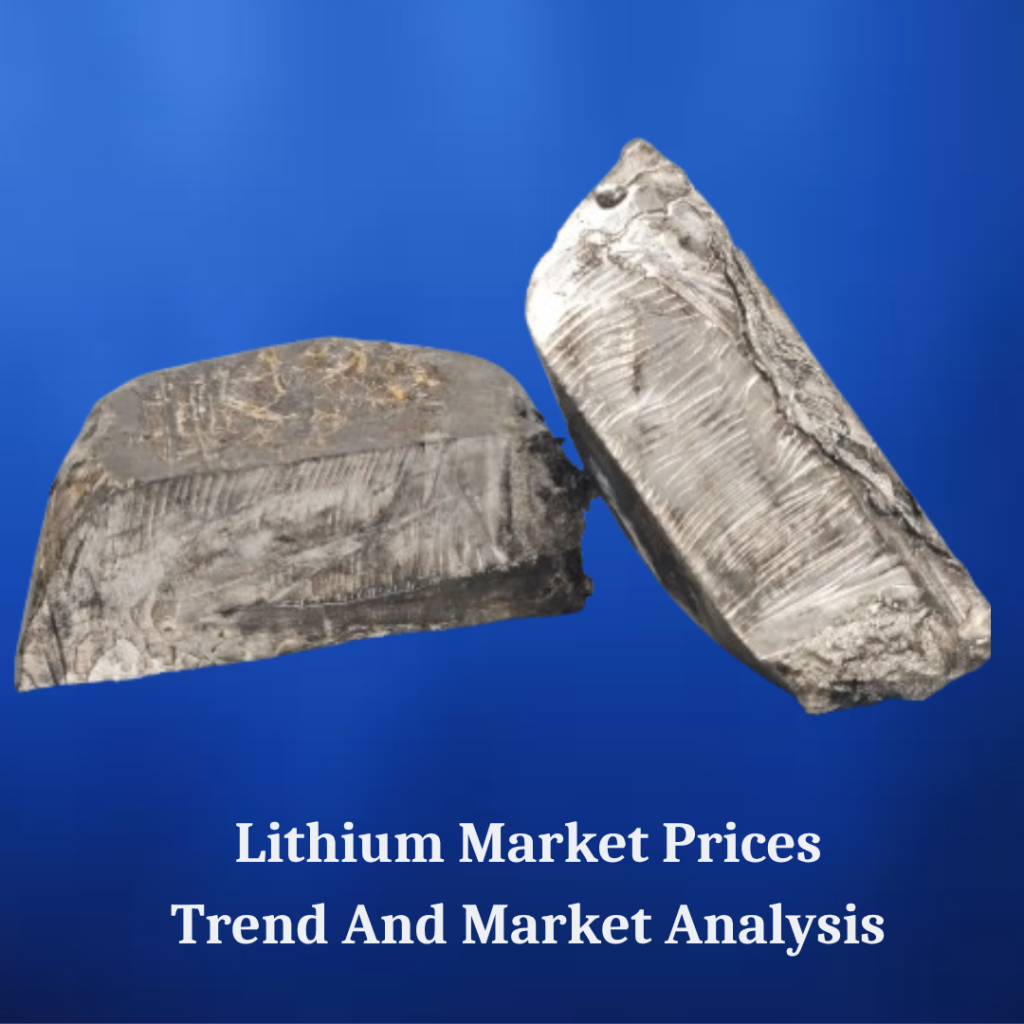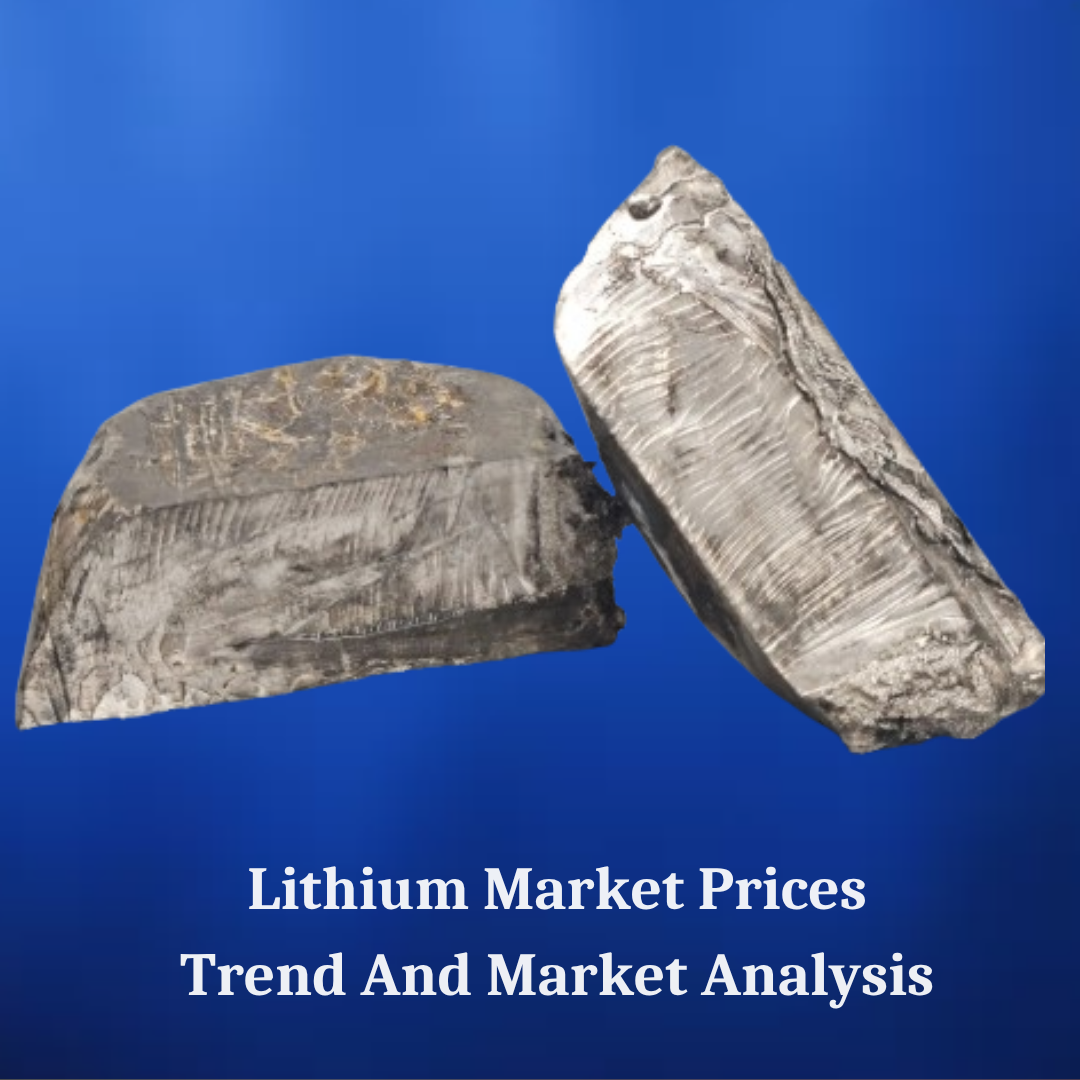
Lithium, a critical component in rechargeable batteries for electric vehicles (EVs), energy storage systems, and consumer electronics, has witnessed significant price volatility in recent years. Understanding the factors influencing lithium prices is essential for stakeholders across various industries.
👉 👉 👉 Please Submit Your Query for Lithium Price Trend, forecast and market analysis: https://www.price-watch.ai/contact/
Lithium Market CAGR and Growth Forecast
The global lithium market is projected to grow at a Compound Annual Growth Rate (CAGR) of 15% through 2025. This growth is primarily driven by the increasing adoption of electric vehicles and the expansion of renewable energy storage solutions. However, the market faces challenges such as oversupply, geopolitical tensions, and environmental concerns, which may impact price stability.
Quarterly Lithium Price Trend Analysis
Q1 2024: Market Overview
- United States: Lithium metal prices were approximately $140,000 USD/MT. The market experienced downward pressure due to oversupply and reduced demand from battery manufacturers.
- China: Prices stood at $184,500 USD/MT, reflecting a similar trend influenced by global supply dynamics and domestic economic factors.
- Germany: Lithium metal prices were around $544,000 USD/MT, with the European market facing challenges related to supply chain disruptions and regulatory changes.
Q2 2024: Price Adjustments
- United States: Prices declined to $130,000 USD/MT, influenced by continued oversupply and slower-than-expected demand recovery.
- China: Prices decreased to $175,000 USD/MT, with domestic production ramping up and export restrictions impacting global supply.
- Germany: Prices fell to $510,000 USD/MT, as European manufacturers sought alternative sources to mitigate supply risks.
Q3 2024: Stabilization Phase
- United States: Prices stabilized at $140,000 USD/MT, as market participants adjusted to the new supply-demand equilibrium.
- China: Prices remained steady at $180,000 USD/MT, with government initiatives supporting domestic production and consumption.
- Germany: Prices held at $500,000 USD/MT, as European industries adapted to the evolving market conditions.
Q4 2024: Year-End Outlook
- United States: Prices were projected to reach $150,000 USD/MT, with expectations of increased demand from the automotive sector.
- China: Prices were anticipated to rise to $190,000 USD/MT, driven by both domestic consumption and export growth.
- Germany: Prices were expected to increase to $520,000 USD/MT, as European manufacturers secured additional supply contracts.
Q1 2025: Forecasted Trends
- United States: Prices are projected to be around $160,000 USD/MT, reflecting a balanced market with steady demand from the EV sector.
- China: Prices are expected to stabilize at $200,000 USD/MT, with continued government support and infrastructure development.
- Germany: Lithium Prices are anticipated to be approximately $530,000 USD/MT, as European industries ramp up production to meet growing demand.
Lithium Demand-Supply Dynamics
The lithium market is experiencing a significant supply-demand imbalance. In 2024, global lithium production expanded by over 35%, while demand surged by 30%, reflecting the health of the EV market and increasing clean energy adoption. However, forecasts indicate a looming lithium deficit that could significantly impact the EV market. The disparity between raw material supply and demand is worsened by the lengthy timeline for developing lithium mines. Mines can take 5 to 25 years to become operational, while midstream and downstream facilities require less than five years.
Experts suggest this oversupply may persist until a market rebalancing occurs around 2027–2028.
Top Global Lithium Suppliers
- Albemarle Corporation (USA): A leading producer with significant operations in the United States and Australia.
- Sociedad Química y Minera de Chile (SQM): The world’s largest lithium producer, with extensive operations in Chile’s Atacama Desert. (en.wikipedia.org)
- Ganfeng Lithium (China): A major player in the global lithium market, with operations in China, Argentina, and Australia. (en.wikipedia.org)
- Tianqi Lithium (China): A significant producer with interests in Australia and China.
- Greenbushes Mine (Australia): The world’s largest hard-rock lithium mine, producing approximately 1.95 million tonnes of lithium spodumene annually. (en.wikipedia.org)
- Sinomine Resources (China): A Chinese mining company with a portfolio of projects across Africa, Asia, and Canada. (en.wikipedia.org)
Regional Market Outlook
Asia-Pacific
The Asia-Pacific region, led by China, remains the largest market for lithium. Strong industrial demand, particularly from the EV and electronics sectors, is fueling growth. However, supply chain disruptions and environmental concerns pose challenges to sustained growth.
Europe
Europe is experiencing increased demand for lithium, driven by the expansion of EV manufacturing and renewable energy projects. Countries like Germany and France are investing heavily in domestic production and securing supply chains to reduce dependence on imports.
North America
The United States is focusing on boosting domestic lithium production through initiatives like the Department of Energy’s MINER program. Partnerships between automakers and mining companies are emerging to ensure a stable supply of lithium for EV batteries.(vox.com)
Latin America
Latin American countries, particularly Argentina and Chile, are expanding their lithium production capacities. These nations are attracting significant investments to meet the growing global demand for lithium.
Africa
Africa is emerging as a key player in lithium production, with countries like Zimbabwe and Mali developing significant mining projects. These developments are expected to diversify global lithium supply sources. (discoveryalert.com.au)
Final Words
The lithium market is at a critical juncture, with supply struggling to keep pace with the rapidly growing demand driven by the electric vehicle and renewable energy sectors. While short-term oversupply has led to price volatility, long-term projections indicate a potential supply deficit if investment in new production capacities does not accelerate. Stakeholders across the supply chain must navigate these dynamics carefully to ensure a stable and sustainable lithium supply in the coming years.

